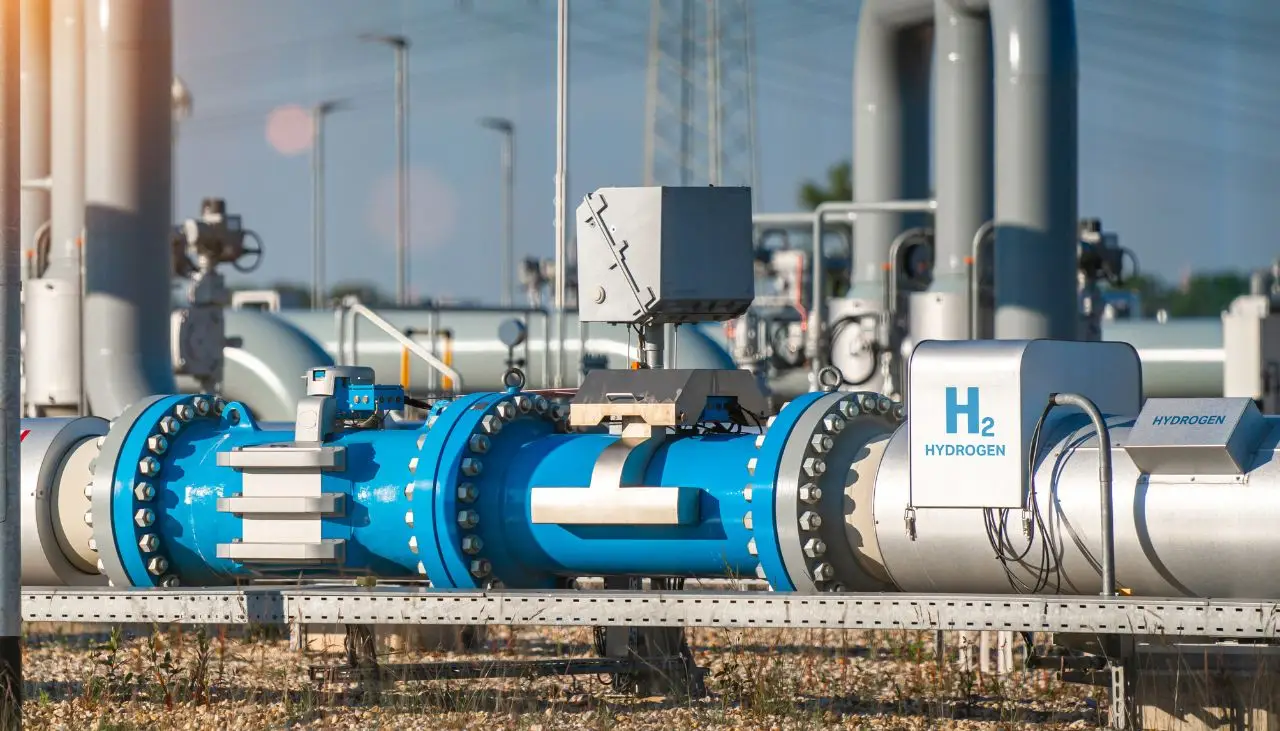Unlocking Clean Energy: Efficient Hydrogen Production from Natural Gas
Energas Solutions
29/02/2024

Hydrogen is gaining increasing attention as a clean energy source due to its high energy content and zero greenhouse gas emissions when used as a fuel. The production of hydrogen from natural gas plays a significant role in meeting the current demand. Natural gas is a fossil fuel composed primarily of methane, along with smaller amounts of other hydrocarbons such as ethane, propane, and butane.
Current Methods of Hydrogen Production
Steam-Methane Reforming: A Mature Production Process
Steam-methane reforming (SMR) is the most prevalent method for hydrogen production from natural gas. In this process, natural gas reacts with high-temperature steam in the presence of a catalyst to produce a mixture of hydrogen, carbon monoxide, and carbon dioxide. This mixture is known as synthesis gas, or syngas.
High-temperature steam is crucial in the steam-methane reforming process as it enables the breakdown of the hydrocarbon chains in natural gas, resulting in the production of hydrogen. The temperature range required for steam-methane reforming typically falls within 700-900 degrees Celsius.
Catalysts, such as nickel-based materials, facilitate the reaction by accelerating the rate of hydrogen production. They promote the breaking of carbon-methane bonds and assist in the formation of hydrogen molecules.
The Growing Prominence of Hydrogen in Gas Utilities
Natural gas utilities are increasingly promoting the utilization of hydrogen as an alternative and cleaner energy source. Hydrogen offers the advantage of zero greenhouse gas emissions when used as a fuel, making it an attractive option for reducing carbon footprints. The potential of hydrogen as a versatile energy carrier and its compatibility with existing natural gas distribution networks further contribute to its growing prominence.
While hydrogen poses certain challenges in terms of production and storage, industry leaders believe it holds immense promise as a sustainable energy option for the future. Issues such as the development of hydrogen infrastructure, storage technologies, and policy frameworks need to be addressed to facilitate the adoption of hydrogen in gas utilities.
Current Dominance of Natural Gas in Hydrogen Production
Natural gas is currently the primary feedstock for hydrogen production, with the majority of global hydrogen being produced using steam-methane reforming. The demand for hydrogen is driven by industries such as fertilizer production, oil refining, and chemical manufacturing, which heavily rely on hydrogen derived from natural gas.
The advantages of using natural gas for hydrogen production lie in its abundance, low cost, and well-established infrastructure for natural gas extraction, transportation, and distribution. However, using natural gas as a feedstock for hydrogen production also has limitations. It is a fossil fuel, and its utilization contributes to carbon emissions, albeit lower than other hydrocarbon sources. Efforts are underway to explore alternative, greener methods of hydrogen production to reduce environmental impacts.
Diversifying Hydrogen Production Methods
Stakeholders in the energy industry recognize the need to diversify hydrogen production methods to ensure a sustainable and reliable supply. Electrolysis, which involves splitting water into hydrogen and oxygen using electricity, is emerging as a promising alternative method for hydrogen production.
The efficiency and environmental impact of steam-methane reforming and electrolysis differ significantly. While steam-methane reforming is a mature and cost-effective process, it generates carbon dioxide as a byproduct. On the other hand, electrolysis can produce hydrogen without emitting greenhouse gases if renewable electricity sources are utilized. However, electrolysis is currently less efficient and more expensive compared to steam-methane reforming.

The Quest for Greener Hydrogen: Green vs. Blue Hydrogen
In pursuit of greener hydrogen production, two approaches have gained attention: green hydrogen and blue hydrogen.
Green hydrogen refers to hydrogen produced through electrolysis powered by renewable energy sources. It offers the advantage of zero emissions at the point of production. However, the cost of green hydrogen remains relatively high due to the expensive nature of renewable energy technologies and infrastructure.
Blue hydrogen, on the other hand, is produced using natural gas combined with carbon capture and storage (CCS) technologies. The carbon dioxide emitted during hydrogen production is captured and stored, reducing the overall carbon footprint. Blue hydrogen offers a more cost-efficient method of decarbonizing the existing natural gas-based production infrastructure.
Countries such as Germany, Japan, and Australia, as well as prominent companies like Shell and Equinor, are embracing green hydrogen as part of their strategies to transition to a low-carbon economy.
Natural Gas Reforming: A Viable Path to Hydrogen Production
Despite the challenges associated with carbon emissions, natural gas reforming remains a viable path for hydrogen production, at least in the near term. Technological advancements and the implementation of stricter regulations can contribute to greener natural gas reforming practices.
In the steam-methane reforming process, natural gas is combined with high-temperature steam to produce hydrogen. The reaction takes place in reformers, which can be optimized to improve efficiency and reduce greenhouse gas emissions. Research and development efforts are focused on developing novel catalysts, improving heat management, and enhancing carbon capture and storage capabilities.
The establishment of regulatory frameworks and incentives that support cleaner natural gas reforming practices is crucial in encouraging the adoption of new technologies and processes.
Overcoming Challenges: Energy-Intensive Hydrogen Production
One of the major challenges in hydrogen production is its energy-intensive nature. The current process of splitting natural gas through steam-methane reforming consumes a significant amount of energy. In order to make hydrogen production more sustainable and cost-effective, there is a need to develop more efficient and sustainable hydrogen production methods.
To address this issue, ongoing research and development efforts are focused on improving the efficiency of the reforming process, exploring new catalysts, and investigating alternative methods such as low-temperature electrolysis. The integration of renewable energy sources and advanced energy storage systems can further contribute to reducing the energy requirements of hydrogen production.
Conclusion
In conclusion, hydrogen derived from natural gas plays a crucial role in the current production of clean energy. While natural gas reforming remains dominant, there is a growing emphasis on diversifying hydrogen production methods to reduce carbon emissions and improve efficiency.
Hydrogen’s potential as a clean energy source is recognized by natural gas utilities, leading to a greater promotion of hydrogen utilization. The journey towards greener hydrogen production involves exploring alternative methods such as electrolysis and implementing carbon capture and storage technologies.
The future prospects of hydrogen as a clean energy source rely on continued innovation, research, and collaboration among industry players, policymakers, and researchers. By overcoming the challenges associated with energy-intensive production and adopting greener production methods, hydrogen has the potential to contribute significantly to a sustainable and low-carbon future.
Try Our TV & Internet Services Just For $19 per month





